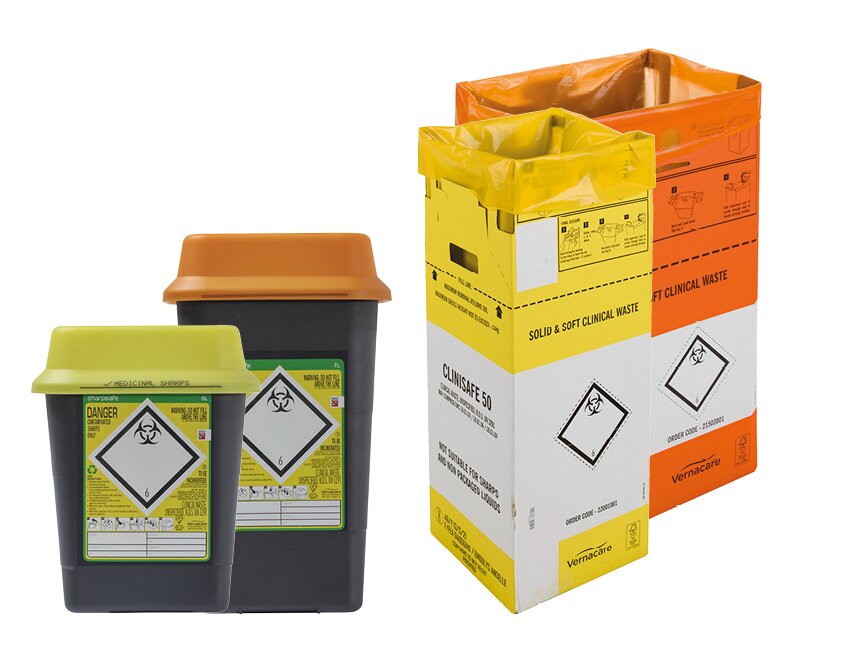
The Categorisation of Mpox as a Cat B Disease

The Categorisation of Mpox as a Cat B Disease
The recent outbreak of Mpox on the African continent, previously known as Monkeypox, has been declared as a public health emergency of international concern (PHEIC) by the World Health Organisation. Rates of infection are expectedly to steadily increase, although cases remain low in countries outside of Africa. It is important to note that the classification of Mpox has remained as a Cat B, meaning existing clinical waste disposal practices remain in line with UN3291.
As many healthcare facilities are preparing for an outbreak of Mpox in their environment, we’ll discuss what Mpox is, and what a Cat B classification means for waste disposal practices.
What is Mpox?
Mpox (previously known as Monkeypox) is a viral zoonotic disease caused by the monkeypox virus, which belongs to the Orthopoxvirus genus in the Poxviridae family. It is similar to smallpox, but generally less severe.
First discovered in 1958, the disease originated an outbreak of a pox-like disease in a colonies of monkeys kept for research, hence the original name of monkeypox. The first human case was actually recorded in 1970 in the Democratic Republic of Congo (DRC).
What are the symptoms of Mpox?
There is an incubation period of 5-21 days, with initial symptoms including:
· Fever
· Headache
· Muscle Aches
· Exhaustion
· Swollen Lymph Nodes
One to three days after the appearance of a fever, a rash develops which often begins on the face and can then spread to other parts of the body. The rash progresses through several stages:
1. Macules (flat lesions)
2. Papules (raised lesions)
3. Vesicles (fluid-filled blisters)
4. Pustules (pus-filled blisters)
5. Scabs
How does Mpox transmit?
Mpox is highly contagious until all the sores have healed and a new layer of skin has formed. You are more at risk of catching it if you have are pregnant, a child, or have a weakened immune system.
There are two methods of transmission for Mpox: animal to human, and human to human.
Animal to human is the direct contact with the blood, bodily fluids, or cutaneous or mucosal lesions of infected animals. Reservoir hosts include various rodents and primates.
Human to human occurs through close contact with respiratory secretions, skin lesions of an infected person, or recently contaminated object. Transmission can also occur via the placenta from mother to fetus, known as congenital monkeypox, or during close contact during or after birth.
Treatment of Mpox
When treating Mpox, most patients can self-isolate at home while they recover, which usually takes 2-4 weeks from the first symptoms occurring. The key to an easy recovery is to manage the rash that occurs and use over the counter medication to manage the rash.
An Mpox vaccine can help prevent infection, which should be given within four days of contact with someone who has Mpox. To prevent the spread, a persons with mpox should remain isolated at home for the duration of the infected period.
How has Mpox been classified as of 2024?
The Mpox disease has recently been downgraded from a Cat A status to a Cat B status. This means that all related waste needs to be disposed of via UN3291 – which all our Sharpsafe® and Clinisafe® containers adhere too.
The government website states that ‘there is no change to waste, transport, or laboratory regulatory requirements as a result of the HCID derogation. By international agreement, samples and waste from Mpox cases are classified as Category B for transport and waste management’.
What does this mean for your healthcare facility?
You will not need to change any of your current practices in light of the potential Mpox outbreak. All existing clinical waste disposal practices that fall under UN3291 are approved for Category B diseases, and you can continue to adhere to best practice as below:
· Waste from a person suspected or confirmed to have mpox can be treated as a clinical category B waste, with waste disposed of in an orange container for alternative waste treatment, and it doesn’t have to be incinerated.
· If there is chemical or pharmaceutical contamination, the waste must be disposed of in a yellow container, (or purple if cytotoxic or cytostatic), and incinerated or sent to an approved site for disposal.
Any laboratory cultures of mpox will continue to be Cat A classified, and will be carried under UN2814. Please refer to your healthcare facilities disposal guidance for Cat A diseases.
Additionally, there is no change to current PPE rules either.
Clinical Waste Management Solutions to support outbreaks
Your healthcare facility can continue to follow best practice disposal under the UN3291 regulations, which means that all Sharpsafe® and Clinisafe® clinical waste containers can be used for suspected or confirmed Mpox cases.
Our new 5 and 7L Sharpsafe® containers are also fully certified to UN3291 and are available in all waste stream colours to ensure the correct disposal of contaminated waste, and to help to minimise the risk of cross-infection and further Mpox outbreaks. Additionally, all our plastic and cardboard Clinisafe® containers hold UN3291 certification and are fully suitable for the disposal of Cat B clinical waste.
Speak to us today to learn more about our UN certifications.
